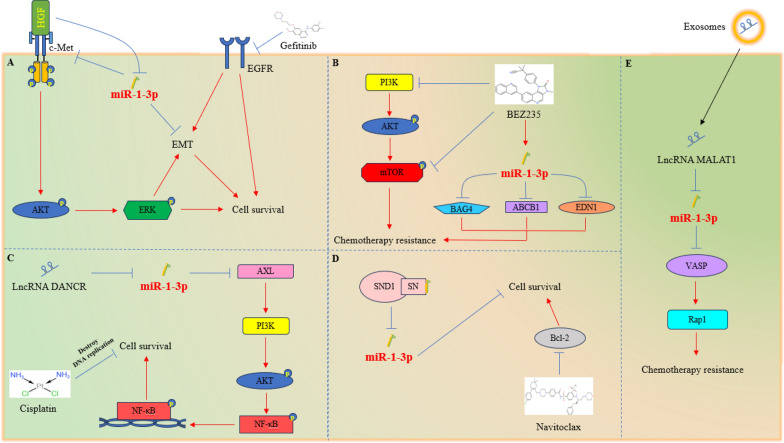Fig. 4.
Role of miR-1-3p in chemotherapy sensitivity. A HGF can reduce the expression level of miR-1-3p and promote the resistance of NSCLC cells with EGFR sensitive mutations to Gefitinib. Overexpression of miR-1-3p can target c-Met, thereby inhibiting the AKT/ERK signaling pathway and EMT process, and ultimately restoring the sensitivity of NSCLC cells to Gefitinib. B The abnormal activation of the PI3K/AKT/mTOR signaling pathway endows AML cells with chemotherapy resistance. The dual inhibitor BEZ235 of PI3K and mTOR can upregulate the expression of miR-1-3p, thereby inhibiting BAG4, EDN1, and ABCB1, ultimately enhancing the chemotherapy sensitivity of AML cells. C LncRNA DANCR upregulates AXL by targeting five miRNAs, including miR-1-3p, thereby activating PI3K/Akt/NF- κB transduction of the signaling pathway, ultimately endowing GBM cells with resistance to cisplatin. D The SN domain of SND1 can bind and degrade miR-1-3p, giving colon cancer cells resistance to navitoclax. E BC cells endow surrounding BC cells with chemotherapy resistance through paracrine exosomes containing high expression levels of lncRNA MALAT1

